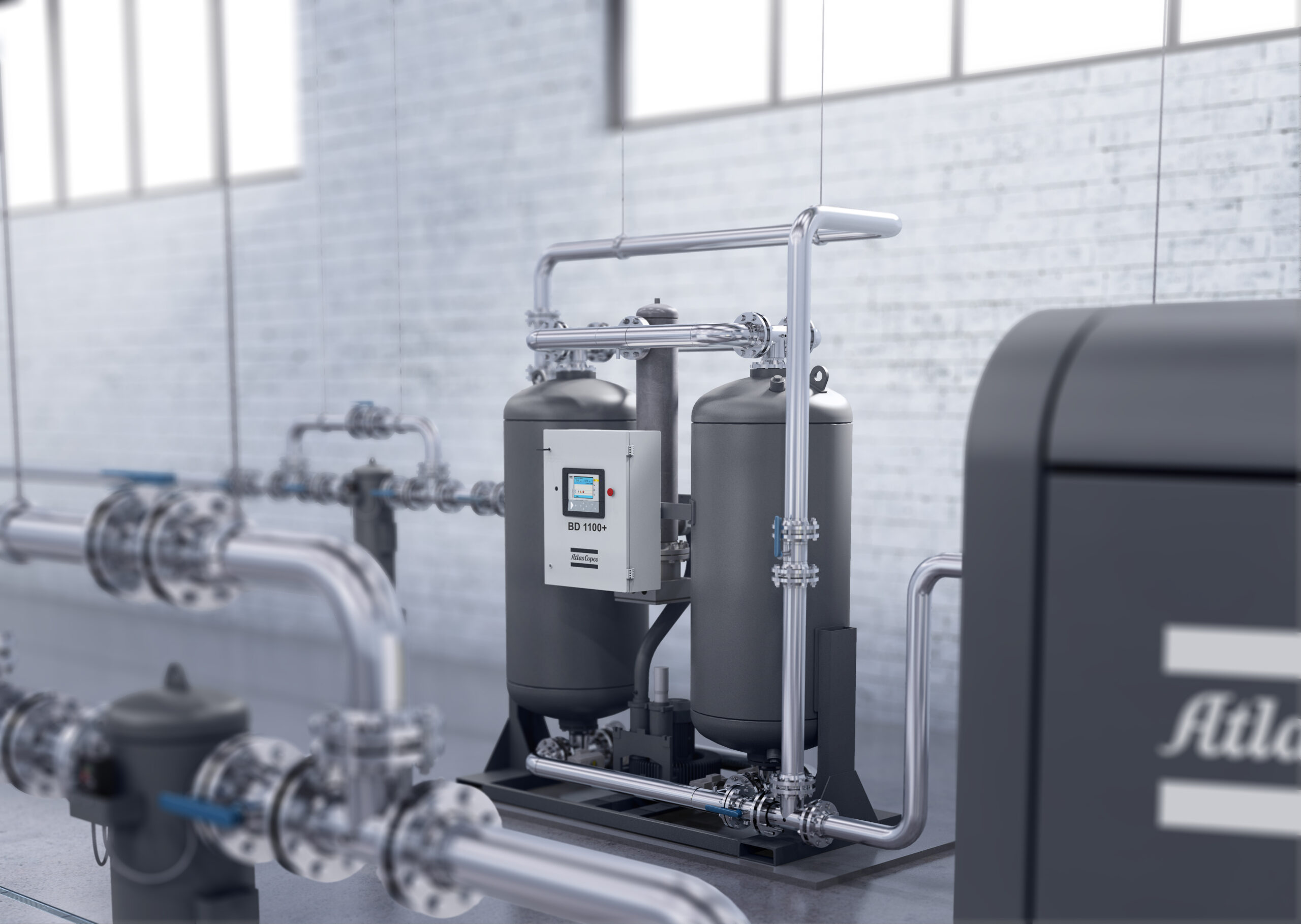Our range of desiccant dryers are a popular air treatment choice with Glaston customers. Also referred to as regenerative or twin tower dryers, desiccant compressed air dryers use chemical beads to attract water from compressed air via absorption. Wet air passes directly through the desiccant dryer, which then adsorbs any moisture.
By design, desiccant compressed air dryers have a finite capacity for adsorbing moisture before it has either dried out or regenerated. As such, they are best applied in a second stage or polishing role. If used downstream from your air compressor, desiccant dryers can reliably produce dew points in the sub zero range when applied inline with another primary air dryer. As a result, the desiccant medium will be depressurised and accumulated water vapours are eradicated.
Often referred to as absorption dryers, desiccant air dryers are typically supplied by Glaston in two distinct variants: single canister and twin tower air dryers. Single canister desiccant dryers are typically installed within point-of-use applications. When used as a second stage air dryer, they can achieve the required dew points for any air compressor or compressed air system. They also feature filter housings that house granular media, which requires periodical replacement. This media can be regenerated once heated to higher temperatures.
By comparison, twin tower desiccant dryers feature two vertical tanks filled with media. Also referred to as regenerative desiccant air dryers, the name comes from the in-depth regeneration process of water vapours within air compressors. This process regenerates the desiccant media in the first tank and makes it ready for redirection through to the second tank. As the first tank heats, a portion of the dried air is drawn back through the tank and vented into the atmosphere. It is important to note that when selecting your desiccant air dryer, twin tower models use 15-20% of their capacity regenerating the opposite tank.
Regeneration within desiccant dryers is achieved by one of the following:
- Heatless pressure-swing drying with a 17-20% purge rate.
- Heated dryers with a 0.7% purge rate.
- Heat of compression, within oil-free air compressors only.


